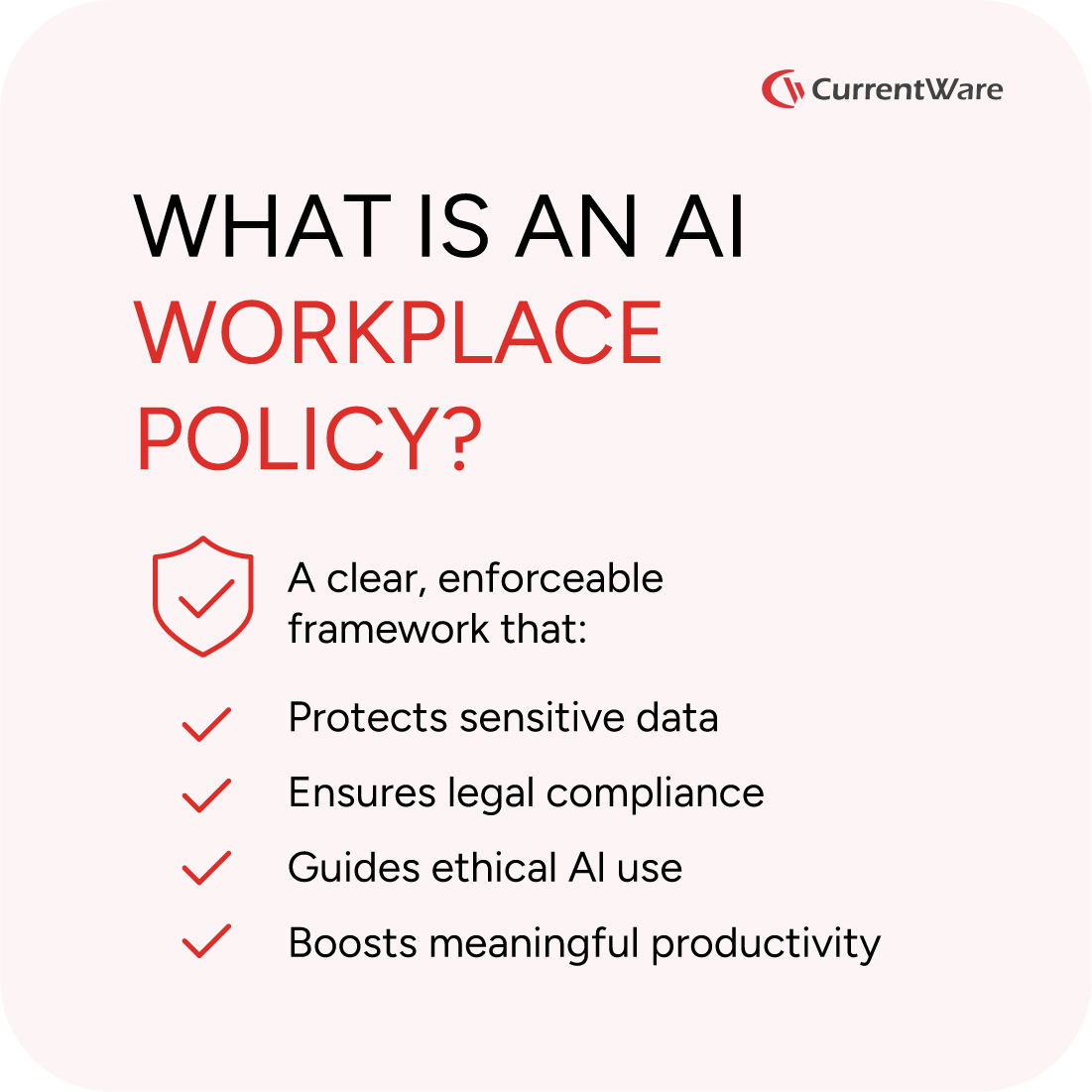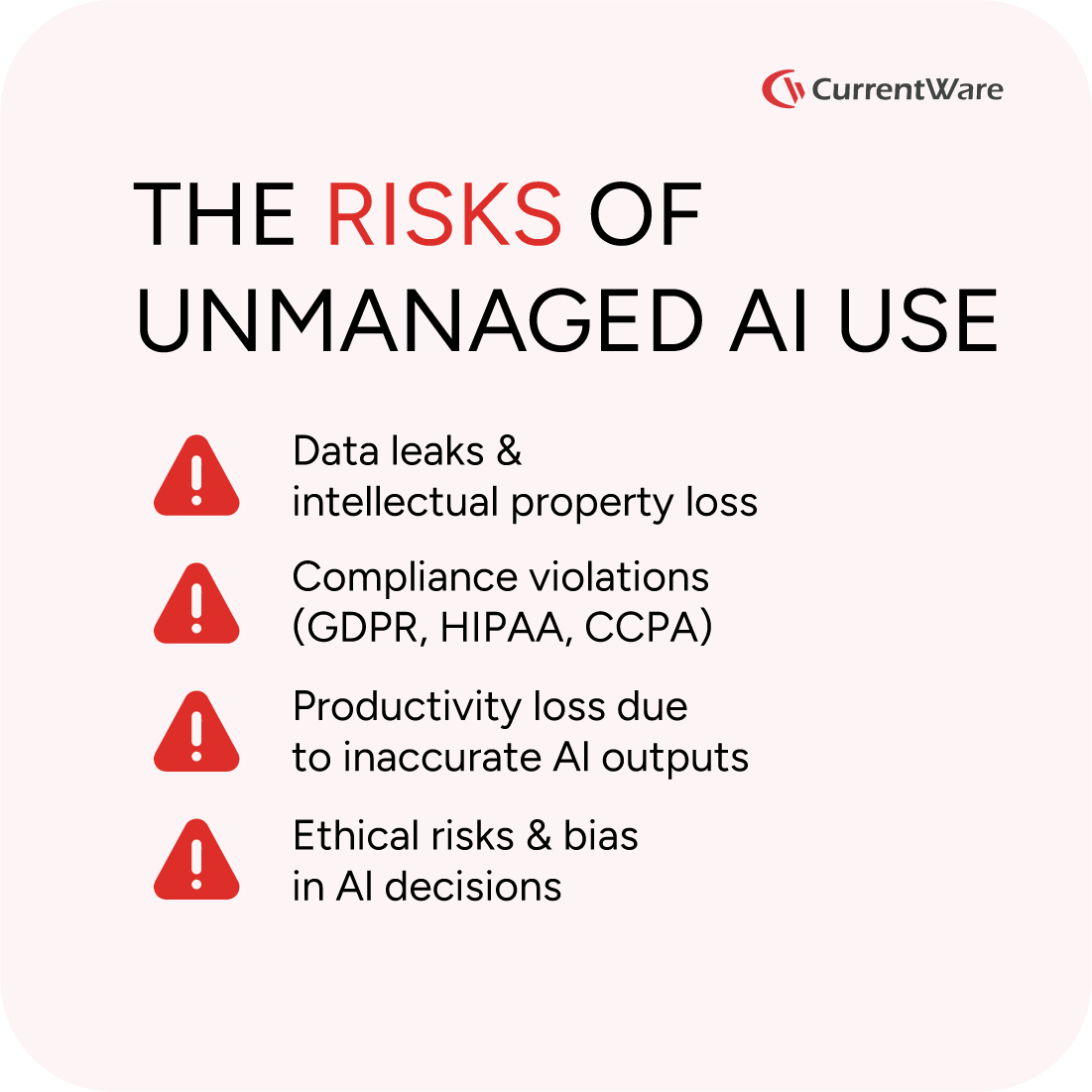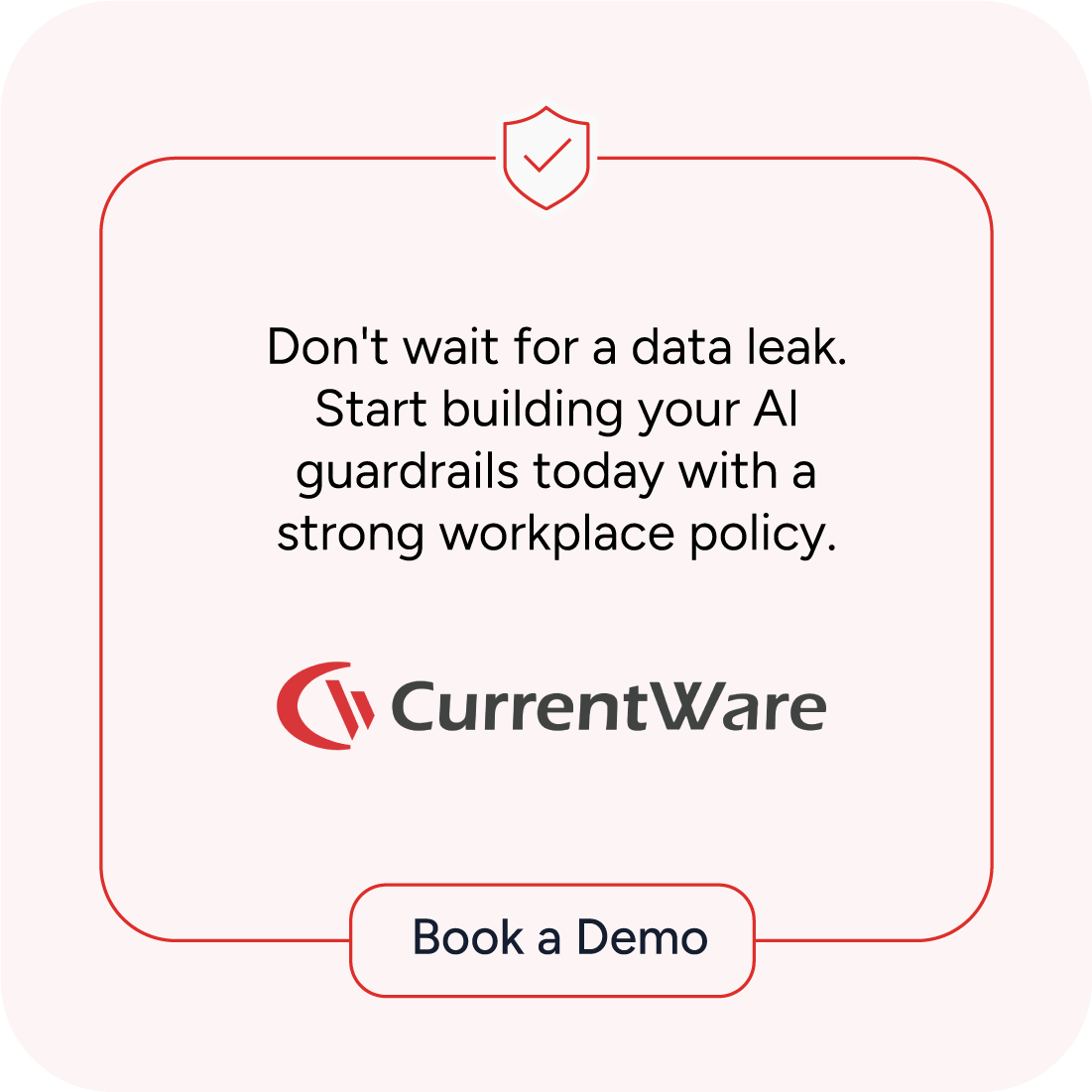Why Every Organization Needs an AI Workplace Policy (and How to Make One That Works)
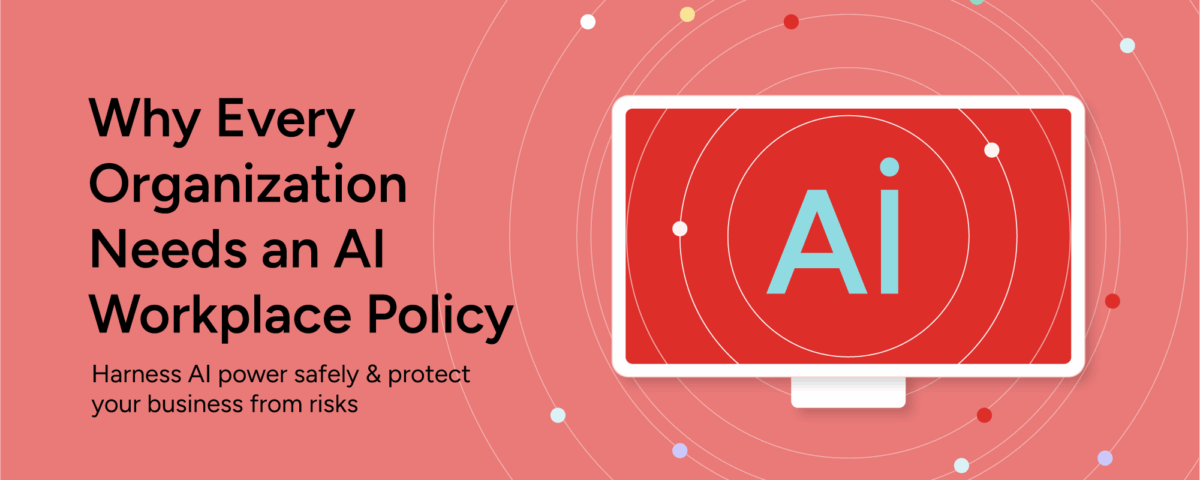
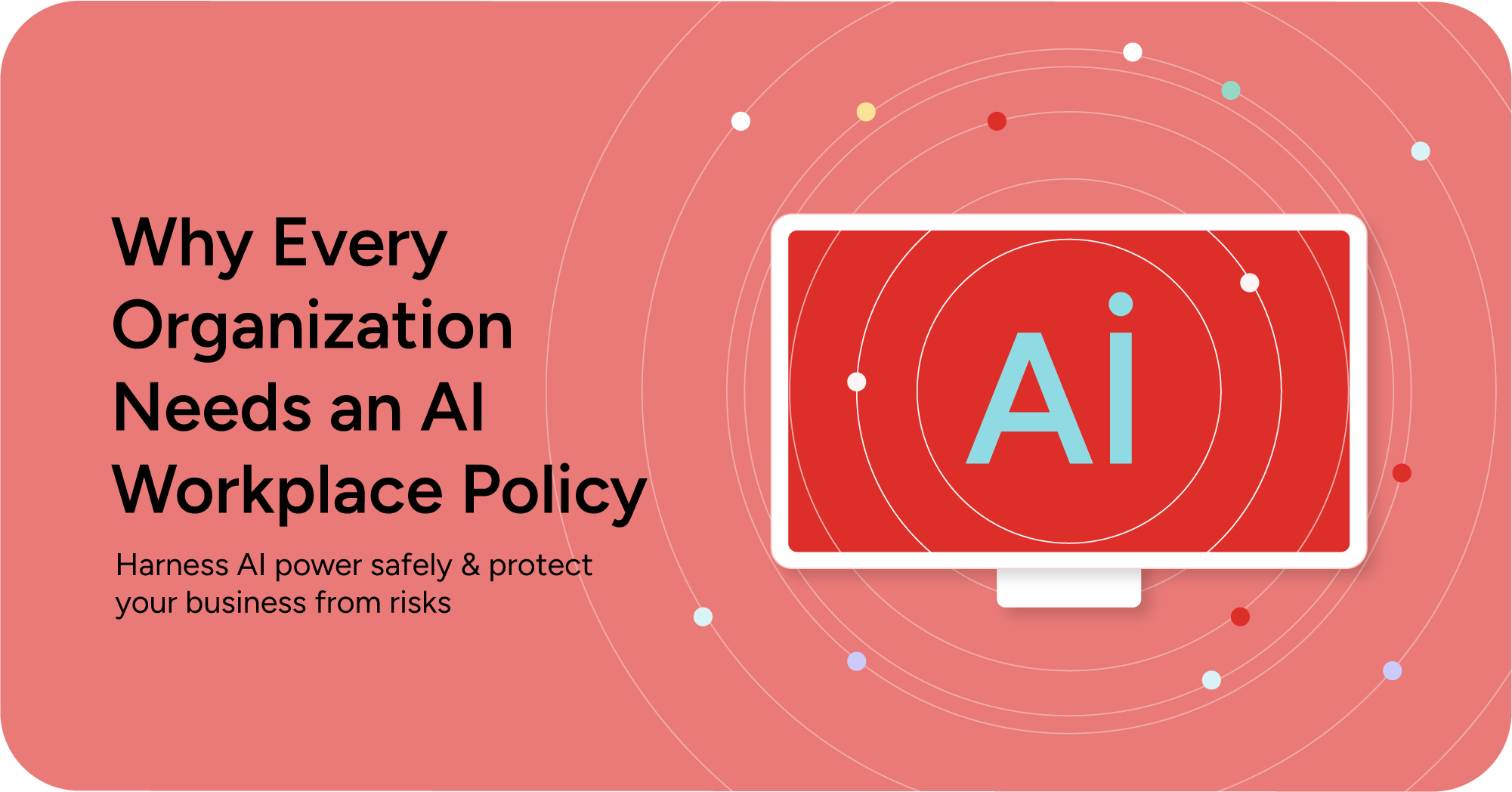
Table of Contents
- 1: Why Every Organization Needs an AI Workplace Policy
- 2: Top 4 Reasons to Implement an AI Workplace Policy
- 3: How to Create an AI Policy That Works (7-Step Guide)
- 4: Key Elements Your AI Workplace Policy Must Include
- 5: How to Monitor and Enforce Your AI Policy
- 6: Start Building Your AI Guardrails with CurrentWare Today
- 7: Frequently Asked Questions
Corporate investment in generative AI is soaring, with average budgets expected to grow by nearly 60% over the next three years, according to a report from Boston Consulting Group. This investment is already paying off, with a recent Gallup study finding that 93% of Fortune 500 companies have now begun using AI to improve business practices.
While the potential for productivity is immense, this rapid, unmanaged adoption of AI introduces a new frontier of risks. The rise of "Shadow AI", a subset of the broader Shadow IT problem, is a growing concern. Research from Oliver Wyman shows that nearly 80% of workers at companies that forbid generative AI use it anyway.
An AI workplace policy is the essential framework that allows you to harness the power of AI while protecting your organization from data leaks, compliance violations, and ethical pitfalls.
This guide will walk you through why an AI policy is non-negotiable and provide a practical roadmap for creating one that safeguards your organization and empowers your employees.
Also Read: Data Loss Prevention Software - Endpoint DLP Solutions
Start minimizing your software costs today.
Are you ready to start tracking software usage and start saving time and money?
Top 4 Reasons to Implement an AI Workplace Policy
An AI policy is a critical component of your risk management strategy. Here’s why you need one today.
- Mitigate Critical Data Security Risks
When employees use public AI tools, they may unknowingly input sensitive information like intellectual property, financial data, or customer PII. Many AI models use this data for training, creating a significant risk of unauthorized data exfiltration. An AI policy clarifies what data is off-limits for public AI platforms, preventing your confidential information from being exposed.
- Ensure Regulatory Compliance
Data protection regulations like GDPR, CCPA, and HIPAA impose strict rules on handling personal data. Using AI tools without considering these regulations can lead to severe breaches and hefty fines. A clear policy ensures that all AI use aligns with your legal and regulatory obligations.
- Boost Meaningful Productivity
An effective AI policy is essential for improving productivity by ensuring that AI tools are used to enhance organizational performance and innovation. Unmanaged AI use can harm productivity. Employees might rely on inaccurate AI-generated information (known as “hallucinations”) or spend excessive time on non-work-related AI creations. For example, a policy can specify approved AI tools for drafting reports, which streamlines workflows and reduces time spent on repetitive tasks. An effective policy, supported by monitoring that can distinguish between active work and idle time, guides employees on how to leverage AI for genuine business benefits while encouraging critical thinking.
Also Read: How to Manage Software Licenses with a Software Metering Audit
How to Create an AI Policy That Works: A 7-Step Guide
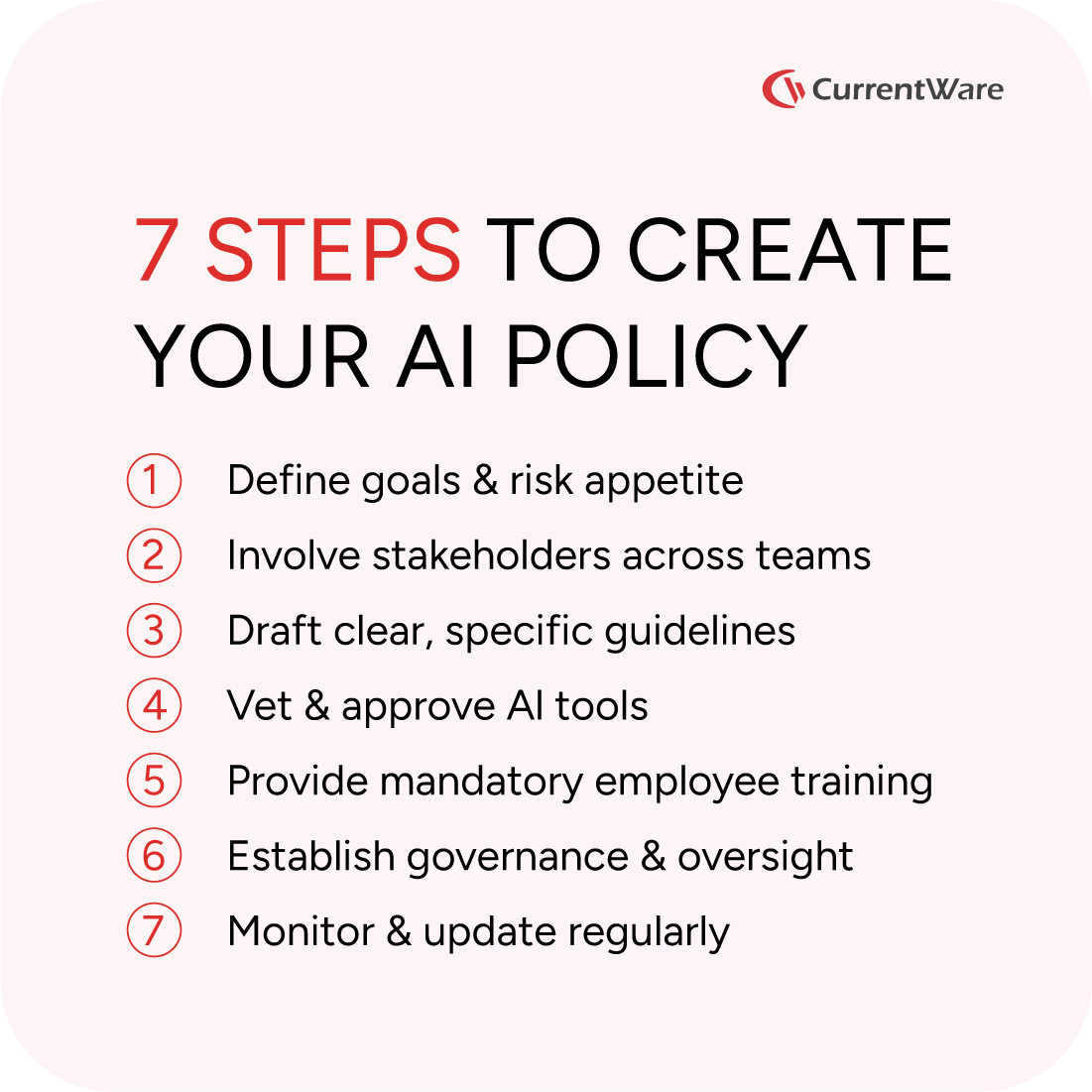
Developing a robust AI policy requires a thoughtful, collaborative approach. Transparency and collaboration in policy development helps build trust among employees and partners, ensuring everyone is aligned and confident in the organization’s direction.
Step 1: Define Your Goals and Risk Appetite
Begin by defining what you want to achieve. Are you aiming to enable innovation, lock down data, or strike a balance? Assess your organization’s specific risks based on your industry and the data you handle.
Step 2: Involve Key Stakeholders
Creating an effective policy is a team sport. Bring together a cross-functional team including IT/security, HR, legal/compliance, department leaders, and partners to ensure the policy is practical and comprehensive. Including partners as stakeholders fosters collaboration and shared responsibility in implementing ethical practices.
Step 3: Draft Clear and Specific Guidelines
Avoid vague language. Your policy must be easy to understand. Use our checklist to cover all essential areas. Start with a template, but always customize it to fit your unique organizational needs.
Step 4: Establish a Process for Vetting and Approving Tools
Your policy should include a formal process for employees to request the review and approval of new AI tools. This creates a safe channel for innovation and prevents employees from going “rogue” with unvetted platforms.
Step 5: Provide Comprehensive Training
It is essential to provide training so employees fully understand the policy. Conduct mandatory training that explains the “why” behind the rules. Use real-world examples to illustrate the risks of improper AI use and showcase the benefits of approved tools.
Step 6: Define Governance and Oversight
Establish an internal group or process dedicated to reviewing AI tools, monitoring developing laws, and fielding internal questions or reports of policy violations. This ensures the policy remains a living, relevant document.
Step 7: Monitor, Enforce, and Update Regularly
The world of AI is evolving at an incredible pace. You need a plan to monitor AI usage, enforce the rules, and review the policy at least annually or as new technologies emerge.
Ongoing practice is crucial—regularly implementing, refining, and adhering to your AI policy ensures it remains effective and relevant. Continuous improvement and practical application across the organization help maintain high standards and build trust with both employees and partners.
Also Read: Insider Threat Detection Software - Monitor Employee Activity
Key Elements Your AI Workplace Policy Must Include
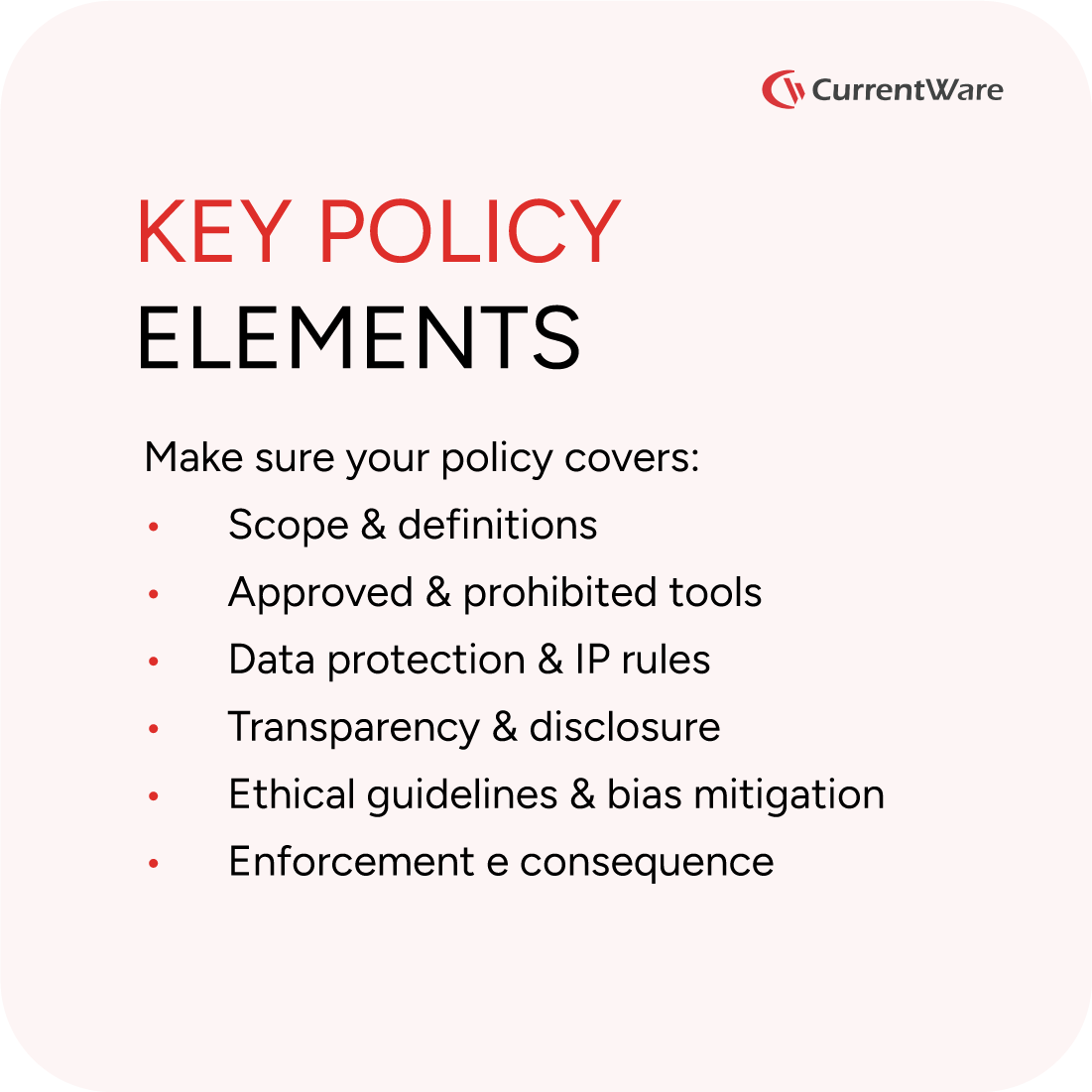
A strong policy leaves no room for ambiguity. Ensure your document includes:
- Scope & Definitions: State who the policy applies to and clearly define terms like “Artificial Intelligence,” “Generative AI,” and “Confidential Data” to ensure everyone has a shared understanding. Specify that the office is the central location for policy enforcement and oversight.
- Acceptable Use: Provide clear dos and don’ts for how employees can use AI.
- Approved & Prohibited Tools: Maintain an updated list of company-vetted AI applications and explicitly forbid high-risk tools. Highlight the risks associated with using publicly available AI tools, which may pose security and privacy concerns.
- Data Protection Rules: Specify what types of company, customer, or employee data are strictly prohibited from being entered into any external AI tool. Include other data types, such as sensitive, confidential, or regulated information, that must also be protected. Emphasize the importance of keeping private data secure and preventing unauthorized disclosure.
- Intellectual Property (IP) Rules: Prohibit using AI to generate content that may violate employer, client, or third-party IP rights.
- Transparency & Disclosure: Require employees to disclose when AI has been used to generate content, especially for external-facing materials.
- Ethical Guidelines & Bias Mitigation: Outline rules for using AI in employment-related decisions and mandate human oversight. Reinforce the organization's responsibility to ensure ethical, fair, and transparent AI use.
- Governance & Approval Process: Detail the process for getting new AI tools approved.
- Consequences for Non-Compliance: Establish a clear process for reporting violations and define the consequences. Disciplinary action may include termination of employment for serious breaches.
- Employee Acknowledgment: Require all employees to acknowledge they have read and understood the policy formally.
Also Read: Why Teams are Replacing Time Logs with Productivity Visibility
Ready to Start? Download Our Free AI Workplace Policy Template
To help you get started, we've created a comprehensive, customizable AI Workplace Policy template. Download it now to build a policy that fits your organization’s needs.
Security and Compliance Considerations for Your AI Policy
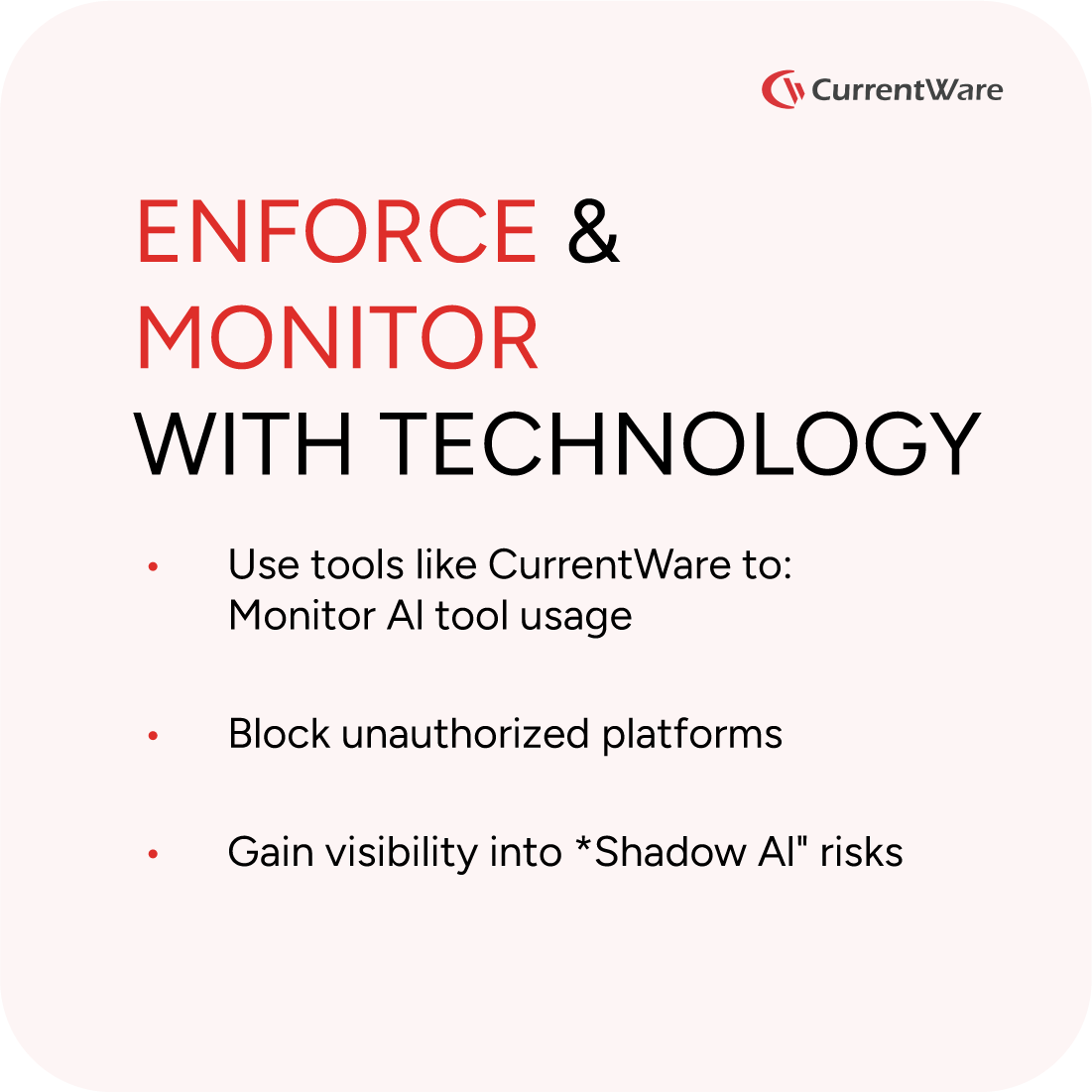
A policy without enforcement is just a suggestion. To ensure compliance, you need visibility into the applications being used on company devices. This is where solutions like CurrentWare become essential.
- Monitor AI Tool Usage: With CurrentWare’s BrowseReporter, you can gain clear insights into which AI websites and applications are being accessed, how frequently, and by whom. This data is crucial for identifying "Shadow AI" and understanding your true risk exposure.
- Block High-Risk AI Applications: CurrentWare’s BrowseControl allows you to proactively enforce your policy by blocking access to unauthorized AI websites. If your policy prohibits certain public AI platforms, you can add them to a block list, ensuring employees use only company-approved tools.
This approach transforms your AI workplace policy from a static document into a dynamic and enforceable standard of conduct.
By proactively using the CurrentWare suite, you can go beyond just writing a policy and build enforceable AI guardrails. Use BrowseReporter to get the data you need for a smart AI policy, then use BrowseControl and AccessPatrol to enforce it, empowering your teams to innovate safely while actively protecting your organization.
Don't wait for a data leak to take action. Use CurrentWare's insights to inform your strategy, enforce your rules, and build a framework that fosters responsible and productive AI use from day one.
